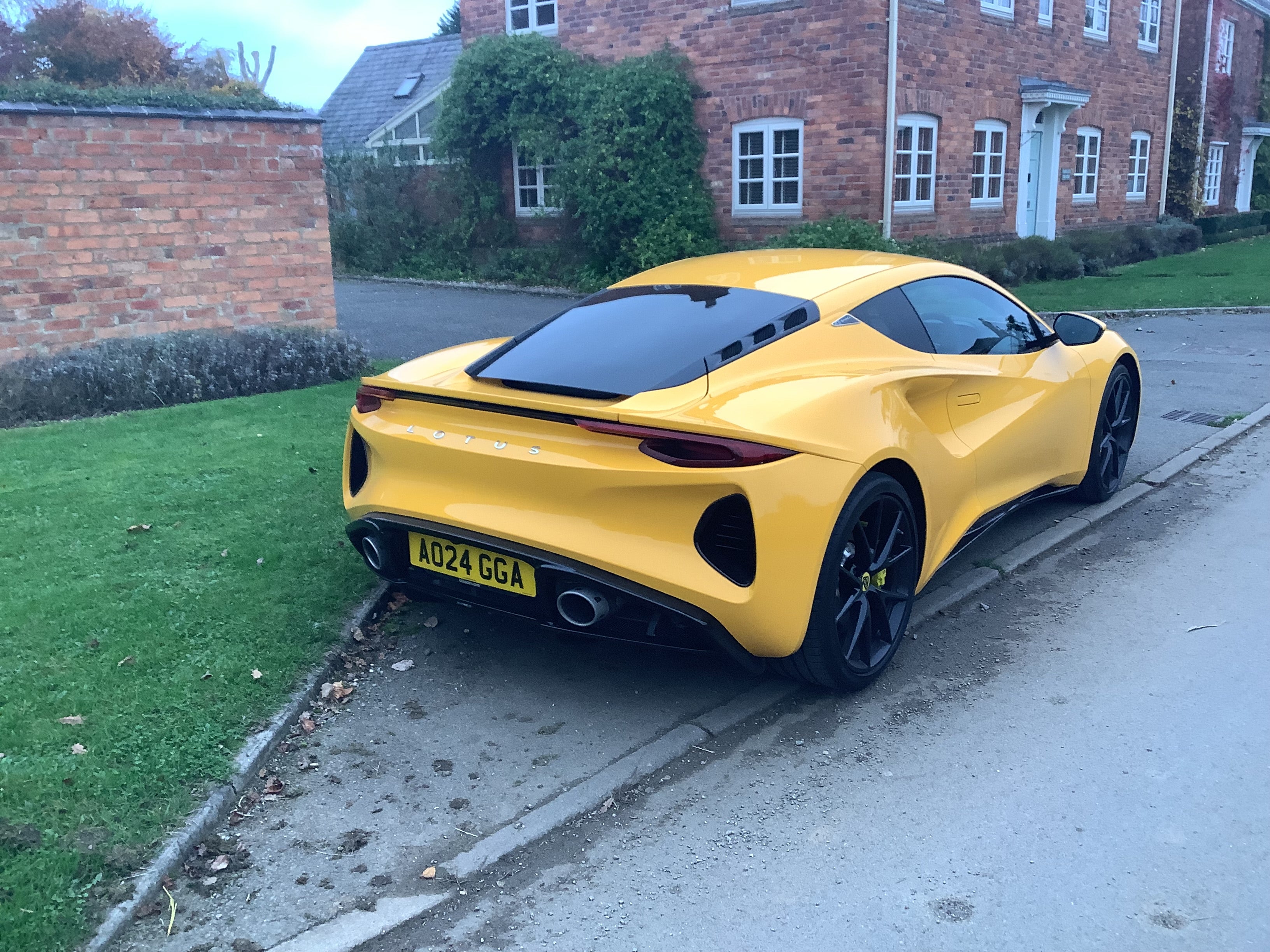
Rather like London buses, my experience with Lotus press cars is that you wait a very long time – and then two turn up at once. Last week was a fine representative of the marque’s future – the Lotus Eletre, their luxury, all-electric “hyper SUV”, made in China, and, with any luck, a reliable profit centre.
This week it’s a nod to the past – the Lotus Emira, most likely the last all-petrol engined Lotus sports car to be launched, and it takes its place firmly in the great tradition.
Lotus has been through a succession of unlikely owners over the decades since the firm was founded by Colin Chapman in 1948 – whose motto was “just add lightness”. General Motors and Proton had mixed success, but now it’s under the stewardship of the Chinese giant Geely, and, allowing for a certain amount of sentiment about the old days, they appear to be honourable custodians.

The Emira, like the Sevens, Elans, Europas, Elites and Exiges of the past, is made in Hethel, Norfolk.
The Emira is a great car and really nicely set up. The version I tried, the Emira i4, was fitted with the “touring” chassis, designed for longer distance “civilian” driving, as opposed to the harder riding “sport”, more the track day weapon.

It was well suited to the smaller, slightly less powerful engine option, a detuned 2-litre four-cylinder unit from the Mercedes-AMG A45 sports hatch, with an eight-speed auto-box with semi-manual paddle shifts if you want them. A Toyota V6, with automatic or manual transmission is also available, at extra cost.
From the moment you set eyes on the Emira, you appreciate what’s so special about it. For a start it looks much more expensive than it actually is, thanks to its Italianate sports car styling – redolent of a Ferrari and looking especially striking with the “Hethel Yellow” finish.

This is not a cheap car – the launch “First Edition” model is about £80,000, and the mainstream models to follow not much less – but it looks like it costs twice as much. It’s a more difficult trick than it sounds, and Geely are fortunate that the storied Lotus badge adds to the authenticity of this pocket supercar.
All the slots and diffusers around the bodywork, highlighted in piano-black trim, are entirely functional, and the lines, particularly at the rear, are pretty clean and almost minimalist.

The “tub” is fibreglass, another Lotus tradition, and this, as Mr founder Chapman dictated, adds lightness” – just under 1.5 tonnes, which is featherweight by modern standards.
The Emira i4 also benefits from an aluminium subframe, and the AMG engine is planted a little further forward than in the V6.
So, this mid-engined machine has an even better balanced weight distribution, and, for such a lovely car, the handling feels quite safe and predictable.

If you want (and I did not) you can set it to go in “track” mode; but otherwise, in “tour” or “sport”, the electronics enhance some accomplished engineering.
The sport mode makes progress a little more urgent, a bit more snarly, the turbo whistles and the kick downs in the gears feel much more satisfying. For the amateur driver it’s involving, safe fun, which is all you should ask of a Lotus.
You can see why, despite the odd reliability and durability issues over the years, Lotus (the plural of Lotus is Lotus, the company says) have always endeared themselves to their owners, like a more charming Porsche.

Clambering into the cabin, you’ll find it rather more solid and luxurious than some past Lotus efforts – swathed in nappa leather and faux-suede “alcantara”. The high-backed seats (just the two) are very comfortable, and the controls are easy to use and a little old school; G-forces and track times take precedence over apps on the small touchscreen.
THE SPEC
Lotus Emira i4 First Edition
Price: £81,495
Engine capacity: 2.0l petrol, 4-cyl, 8-speed auto
Power output (hp): 360
Top speed (mph): 170
0 to 60 (seconds): 4.3 secs
Fuel economy (mpg): 25
CO2 emissions (WLTP, g/km): 208
I especially liked the red cover for the starter button – purely cosmetic but amusing. My 6ft 4in co-driver found adequate head and legroom; the Emira is not too small for comfort. There’s a bit of boot space for a couple of overnight bags in the back, behind the engine.

The Emira occupies a small niche in the car market – those few vehicles that are bigger, faster and pricier than a Mazda MX-5 RF, but obviously cheaper than a Porsche 911 or Lamborghini Huracan, say.
The main rivals, none directly comparable, would be the BMW M2, Porsche Cayman and the retro-styled Alpine A110, of which the Alpine would tempt me more than the others.
Another alternative would be the MG Cyberster, a rare all-electric take on this theme, which is just as enjoyable and dramatic looking as the Emira, but a little less dear.
All I can say is that if you’re still coping with the result of the American presidential election, any of these will take your mind off things – with the invaluable bonus that they’ve got absolutely nothing to do with Elon Musk.







